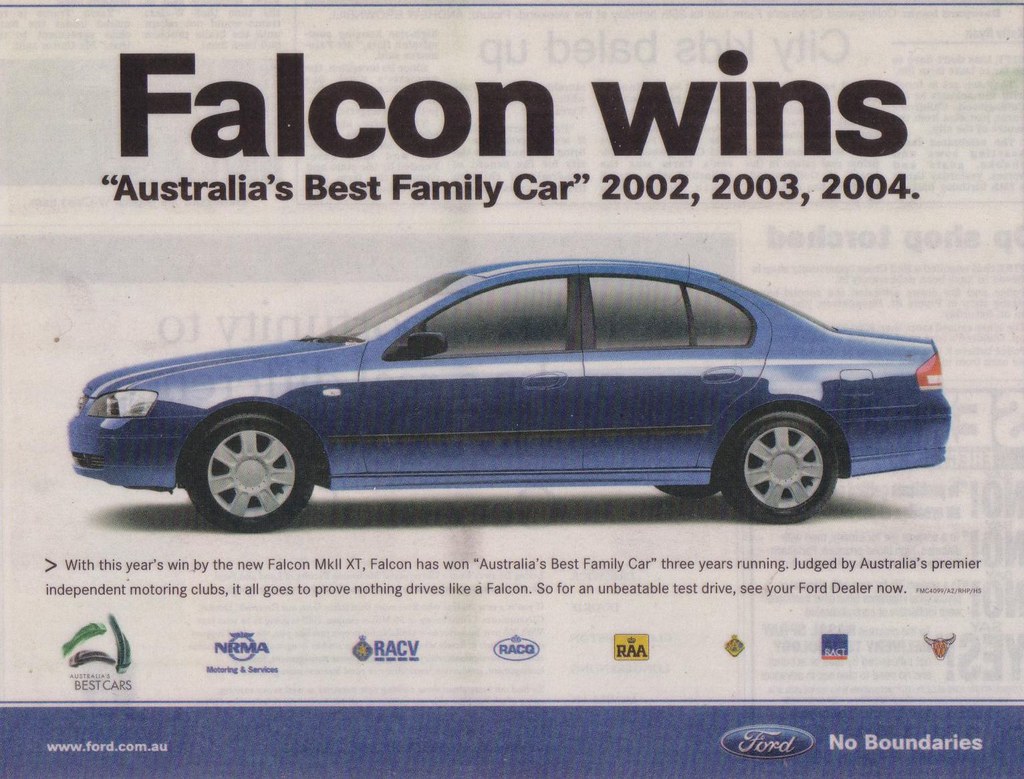
There’s an undeniable thrill that comes with the thought of driving a brand-new car off the lot. The tantalizing scent of a fresh interior, the immaculate paintwork, and the envious glances from onlookers—it all contributes to a powerful illusion of success and an instant boost to one’s personal image. For many, this moment represents a significant milestone, a reward for hard work, and the embodiment of a dream.
However, beneath this gleaming veneer lies a harsh financial reality that many financial experts are eager to reveal. This initial euphoria often blinds individuals to the long-term financial ramifications of buying a new car, let alone the compounded costs of customizing it. As self-made millionaire and bestselling author David Bach starkly puts it, “Nothing you will do in your lifetime, realistically, will waste more money than buying a new car.” He goes further, calling it “the single worst financial decision millennials will ever make.” This isn’t just a matter of opinion; it’s a cold, hard truth backed by the principles of asset depreciation and opportunity cost.
The purpose of this article is to peel back the layers of marketing hype and emotional attachment to expose the worst financial decisions you can make, both when acquiring a new vehicle and when embarking on the journey of customization. We’ll arm you with practical, actionable advice, drawing on the wisdom of seasoned financial experts, to help you navigate the automotive landscape with a clearer understanding of how to protect your hard-earned money. By the end, you’ll be empowered to make informed choices that prioritize your financial well-being over fleeting desires for showroom shine and personalized flair.
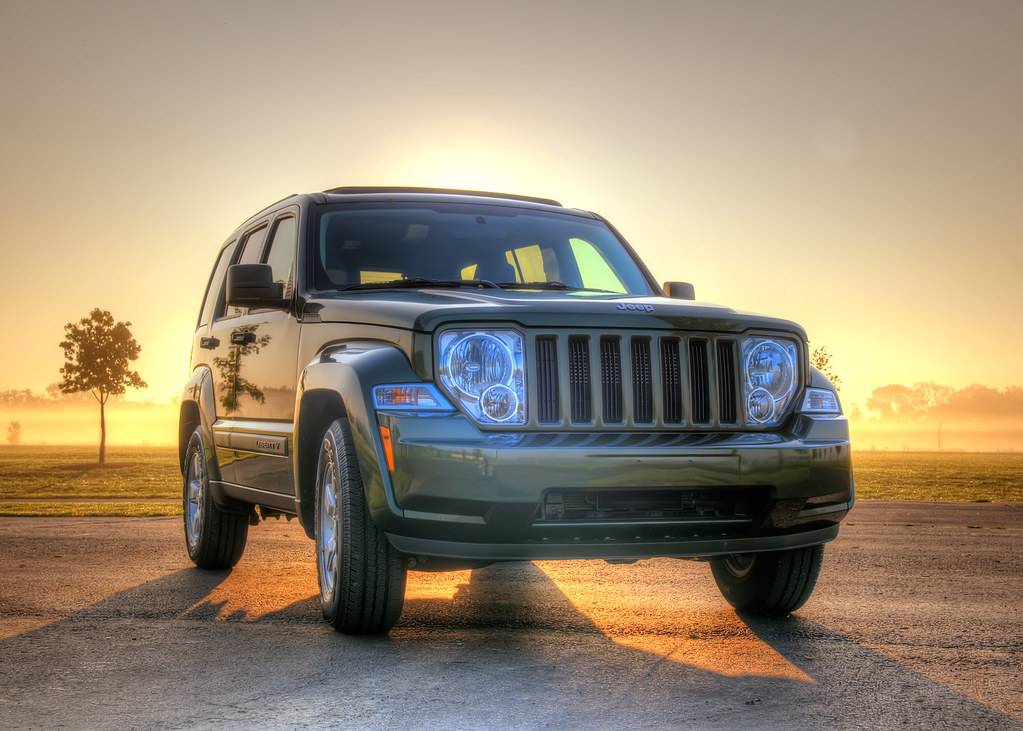
1. **Instant Depreciation of New Cars**
The moment your brand-new vehicle’s tires touch the public road after leaving the dealership, its value takes an immediate, significant hit. This phenomenon, known as instant depreciation, is perhaps the most glaring financial drawback of buying new. According to financial experts, a new car depreciates by about 9% the instant you drive it off the lot. For a car costing, for example, $48,401, that translates to a staggering $4,356 loss in value before you’ve even had a chance to truly enjoy it. This isn’t a gradual decline; it’s an immediate financial blow.
This rapid devaluation doesn’t stop at the dealership gates. Within the first year alone, a new car can lose 20 to 30 percent of its initial value, and in five years, it can plummet by 60 percent or even more. Imagine purchasing a $40,000 car today, only for it to be worth as little as $30,000 or less a mere twelve months later. That is a $10,000 loss, all for the fleeting privilege of being the very first owner. This significant reduction in value happens regardless of how meticulously you care for the car, how few miles you put on it, or how many compliments you receive.
The good news, as David Bach points out, is that you can circumvent this immediate financial drain. Instead of opting for a pristine new model, consider purchasing a car that’s coming off a two- to three-year lease. These vehicles are “almost brand new” but can be acquired at that crucial 30 percent discount. Such cars are typically in excellent condition with low mileage, having already absorbed the steepest part of their depreciation curve. By making this smart move, you can enjoy a relatively new, nice-smelling car for a fraction of the cost, letting someone else bear the brunt of that initial, unavoidable value loss.
Read more about: Beyond the Hype: Unpacking 15 Infamous Rides That Earned a ‘Jerk Car’ Reputation Among Enthusiasts
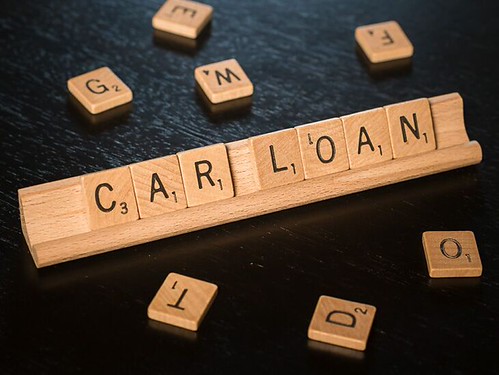
2. **Excessive Car Payments and Loan Interest**
One of the most insidious ways new cars drain your finances is through hefty monthly payments and the accompanying interest on loans. Dealerships often focus on making monthly payments seem affordable, drawing attention away from the total cost of ownership. David Bach wisely advises, “Don’t think about monthly payments. Think about annual payments. Think about the entire term of the loan.” This shift in perspective reveals the true financial burden. The average new car payment in the U.S. has climbed to over $700 a month, which translates to a substantial $8,400 annually, before even factoring in insurance, fuel, or maintenance.
The problem is compounded by the fact that most people borrow money to finance these new vehicles. As Bach questions, “Why would you borrow money to buy an asset that immediately goes down in value by 30 percent?” When you take out a loan for a new, higher-priced car, you’re not just paying for the vehicle; you’re also paying a significant amount in interest over the typical 5-6 year loan term. This means tens of thousands of dollars are spent on an asset that is depreciating every single month, with a substantial portion of your payments going towards interest rather than building equity.
Rachel Cruze, a certified financial coach, further highlights this by noting that a higher loan amount naturally leads to more interest paid over the life of the loan. Depending on the loan term, this could easily amount to hundreds or even thousands of dollars more compared to financing a used vehicle. These seemingly manageable monthly payments, when viewed as annual or total loan term figures, reveal a substantial drain on your budget. By minimizing car payments, you free up significant funds that could be better utilized for wealth building or other financial goals, emphasizing that minimizing what you spend on a car you can afford is key to financial security.
Read more about: Dealership Dirt Uncovered: 15 Sneaky Car Sales Tactics Every Buyer Needs to Master

3. **High Insurance Costs for New Vehicles**
The financial implications of owning a new car extend far beyond the purchase price and loan payments; they significantly impact your insurance premiums as well. New cars inherently cost more to insure than their used counterparts, a factor often overlooked in the excitement of a new purchase. This is primarily due to their higher replacement value. Should a new vehicle be stolen or totaled in an accident, the insurance company faces a much larger payout to replace it, leading to higher premiums for the owner.
Furthermore, new cars typically come equipped with advanced features and technologies, which, while enhancing safety and convenience, also contribute to increased repair costs if damaged. These sophisticated components are often more expensive to replace or repair than those found in older models. When financing a new car through a bank or dealership, you are almost always required to carry full coverage insurance, including comprehensive and collision. This type of extensive coverage, designed to protect the lender’s investment, naturally comes with a higher price tag.
In stark contrast, older cars generally come with lower insurance premiums. Depending on the vehicle’s age and value, you might not even need comprehensive or collision coverage, especially if you own the car outright. This flexibility allows you to tailor your insurance plan to your financial situation, potentially saving you a considerable amount of money each year. The lesson here is clear: the hidden costs of a new car, such as elevated insurance premiums, continue to chip away at your financial health long after you’ve driven it off the lot.
Read more about: Understanding Car Modifications: A Consumer’s Guide to Insurance, Resale Value, and Hidden Costs

4. **The Myth of “Needing” a New Car**
Many individuals fall prey to the pervasive myth that buying a new car is inherently “safer,” “more reliable,” or a “better long-term investment.” This belief, heavily influenced by clever marketing and societal pressures, often drives people to make financially unsound decisions. The reality is, unless you have specific business requirements or highly niche needs, the average driver can function perfectly well, and often better, with a used vehicle. The notion that only a new car can provide peace of mind is largely unfounded, particularly with the advancements in modern used car reliability.
Financial experts universally debunk the idea that a car is an investment. As the context plainly states, “You’re not investing in a car. You’re buying a depreciating asset.” Unlike appreciating assets such as real estate or certain investments, a car loses value over time, making it a liability, not a means of wealth generation. Kevin O’Leary, the renowned personal finance expert, takes a radical stance, declaring, “I hate cars.” He advocates for using ride-sharing services like Uber or Lyft, stating, “I save a fortune. I feel good about it.” This perspective underscores that the primary function of a car—transportation—can often be met without the burden of ownership.
Suze Orman, another respected financial authority, champions buying used and holding onto vehicles for a long time, often 12 years or more. She advises choosing a model you can truly afford over one that merely looks impressive. In her words, “One of the best ways to build financial security is to spend the least amount possible on a car that meets your needs.” She emphasizes, “Forget about the bells and whistles you want. Paying less helps you pay off the car faster.” Rachel Cruze echoes this sentiment, reminding us that “Your identity and worth are not wrapped up in the car you drive.” A five-year-old Honda Civic, while not the fanciest, is a reliable vehicle that won’t compromise your financial stability. Thanks to improved manufacturing standards and transparent vehicle history reports like Carfax, buying a used car with confidence is easier than ever, often with certified pre-owned programs offering warranties without the new car markup.
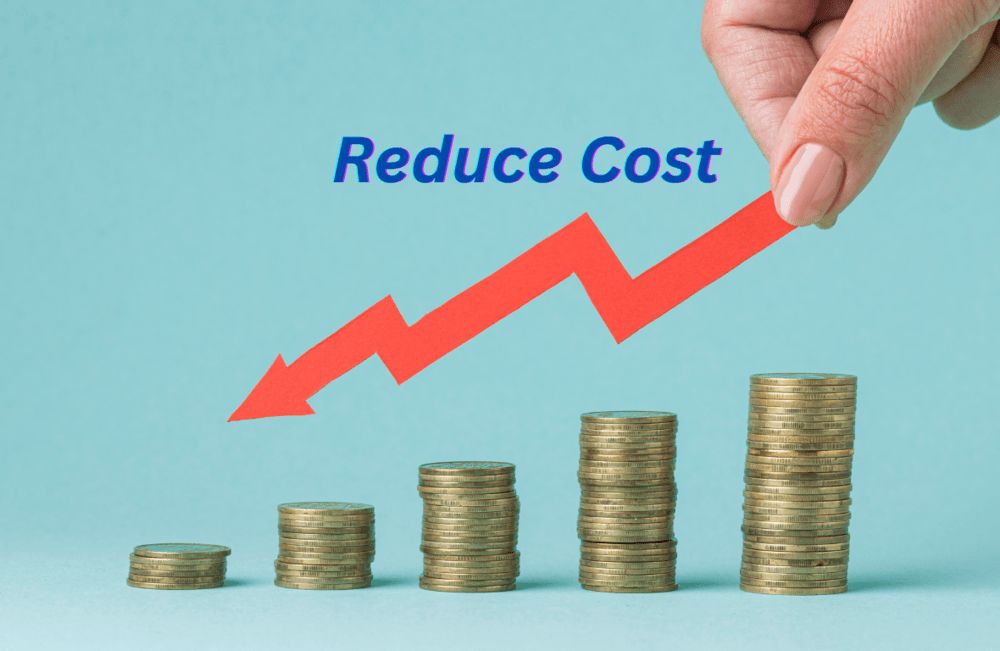
5. **The Hidden Opportunity Cost**
When you choose to spend a significant sum on a new car and its associated costs, you’re not just depleting your bank account; you’re also sacrificing the potential growth of that money elsewhere. This is what financial experts refer to as “opportunity cost”—the value of the next best alternative that you forego. David Bach subtly introduces this concept by urging individuals to “Run the numbers and then ask yourself: Do you really need a car that nice or could you buy a car that’s less expensive — maybe a little older — but still looks good and still runs?” The implied question is, what else could that money be doing for you?
Imagine taking the average new car payment of over $700 a month and instead investing it or allocating it towards a reliable used vehicle with significantly lower payments, or even no payment at all. That monthly saving could be channeled into a retirement fund, a down payment on a home, or a diversified investment portfolio. Over years, the power of compound interest could transform these savings into substantial wealth. For instance, putting $700 a month into an investment account over five or ten years would yield a far greater return than sinking it into a depreciating asset like a new car.
The advice from financial luminaries like Kevin O’Leary, who saves a fortune by avoiding car ownership, and Suze Orman, who advocates for minimal spending on cars to build financial security, implicitly underscores this opportunity cost. Every dollar spent on an unnecessarily expensive car is a dollar not working for your future financial freedom. By choosing a more financially prudent approach to vehicle acquisition, you empower your money to grow and serve your long-term goals, rather than evaporating into depreciation and inflated ownership costs. This proactive financial strategy is a cornerstone of building lasting wealth and stability.
Read more about: Unleash Your Inner Mechanic: 15 Essential DIY Car Hacks to Save a Fortune on Maintenance

6. **Customization: Poor Cost vs. Resale Value**
As exciting as it is to personalize a vehicle, one of the most significant financial pitfalls when customizing a car is the mismatch between the cost of modifications and their impact on resale value. Generally, customizing a car is not a financially sound investment if your goal is to recoup your expenses or even enhance the vehicle’s market worth. Modifications rarely increase a car’s resale value, and in many cases, they can significantly decrease its appeal to potential buyers, narrowing your market to a niche audience who share your specific tastes.
Consider the dilemma of “Cost vs. Value” when assessing customization. High-end performance upgrades, such as turbochargers or advanced suspension systems, might cost thousands of dollars and undeniably enhance the driving experience for an enthusiast. However, as the context highlights, “these modifications may not always translate to a higher resale value, as they cater to a niche market.” An average buyer, often preferring a stock vehicle or one with only universally appealing, easily reversible upgrades, may view such specialized modifications as a liability or an expense they would need to undo.
The key to mitigating this financial risk lies in understanding which modifications retain or even add value versus those that detract. The context advises, “Generally, customizations that are easily reversible or widely appealing tend to retain more value.” For instance, adding premium, high-quality wheels or a top-tier sound system might attract a broader range of buyers compared to a bold, custom paint job or extreme body kits. If your primary goal is to maintain or recoup investment, a careful evaluation of how specific customizations impact your car’s make and model in the resale market is paramount, prioritizing universal appeal over highly personal, unique expressions.

7. **Customization: Performance Upgrades vs. Practicality**.
For many car enthusiasts, performance upgrades are the ultimate expression of automotive passion, promising enhanced speed, handling, and an exhilarating driving experience. However, beneath the allure of boosted horsepower and sharper cornering lies a complex financial decision that often pits pure performance against long-term practicality and cost. While engine, suspension, or brake enhancements can undeniably improve a car’s capabilities, it’s crucial to analyze whether these improvements truly justify the substantial financial outlay and potential future complications.
Engine enhancements, such as turbocharging, supercharging, or ECU tuning, offer a direct path to increased horsepower and torque. For those who prioritize raw speed, these modifications can transform a vehicle into a much more responsive and exciting machine. Yet, the context warns that “Engine upgrades can be expensive and may void warranties, increase maintenance requirements, and even reduce fuel efficiency.” This means sacrificing manufacturer protection, facing higher ongoing costs for specialized parts and labor, and potentially enduring more frequent trips to the gas station—all significant practical drawbacks for a daily driver.
Similarly, suspension upgrades like coilovers, sway bars, or strut braces can dramatically improve handling, reduce body roll, and provide a more precise, planted feel on the road, which is ideal for spirited driving or track days. However, this enhanced performance often comes at the direct expense of ride comfort. A stiffer suspension system, while excellent on a smooth track, can make daily commutes over uneven roads a jarring and unpleasant experience. For most drivers, balancing performance and comfort is critical, as an overly aggressive setup might not suit their lifestyle, leading to buyer’s remorse.
Finally, brake enhancements—upgrading to larger rotors, performance pads, or a big brake kit—are essential for high-performance vehicles, offering superior stopping power and reduced fade under heavy use. These modifications undeniably improve safety and control for those who push their cars to the limit. Yet, like other performance upgrades, they can be costly and necessitate professional installation. For the casual driver, the benefits of such extreme braking systems may be negligible compared to their cost, especially if the car is primarily used for routine errands. Overdoing any of these upgrades without considering their synergy can result in an unbalanced vehicle that fails to meet expectations and only exacerbates financial strain. For most, the pragmatic choice involves carefully weighing these performance desires against the practical realities of daily driving and financial prudence.
Read more about: Where Do You Really Draw the Line with Restomods? A Deep Dive into the Soul of Modified Classics
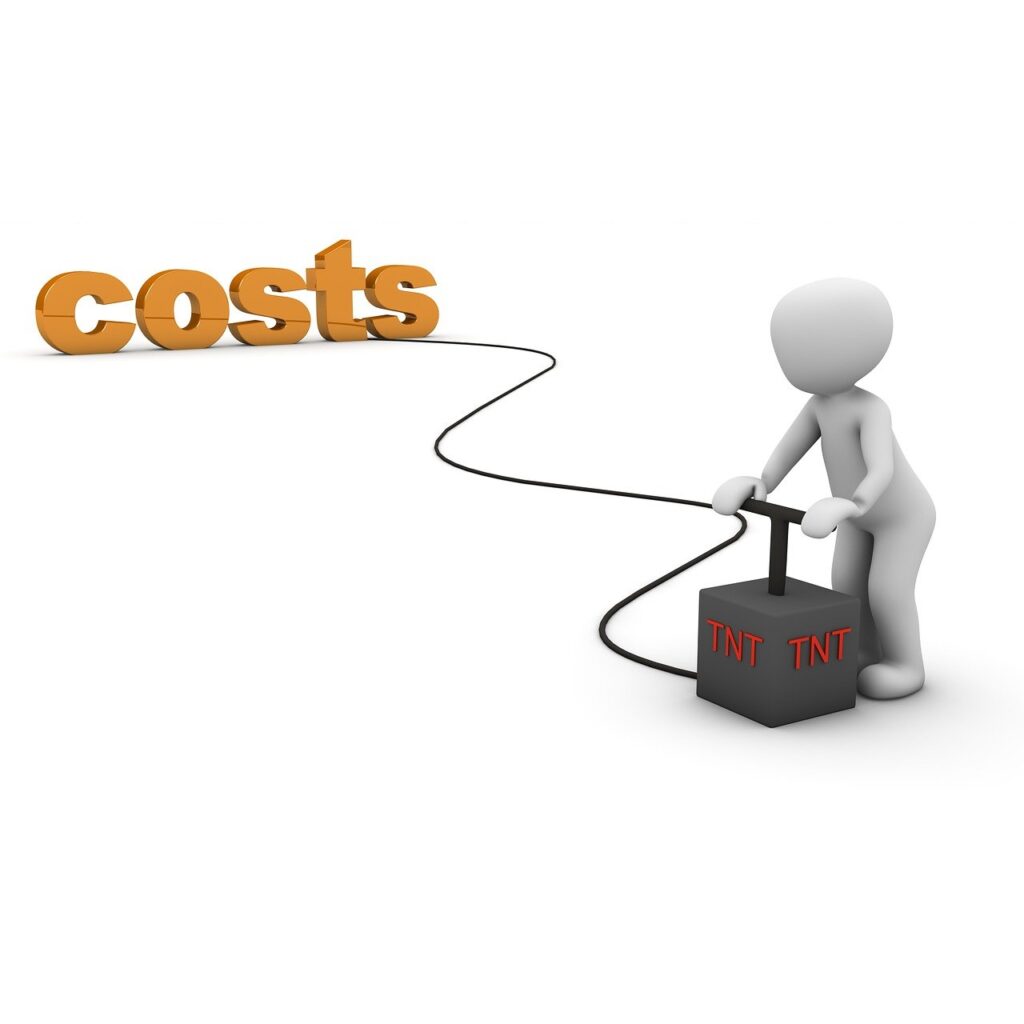
8. **Aesthetic Modifications: Beyond the Look, the Hidden Costs**
For many car enthusiasts, the allure of aesthetic modifications is undeniable. A custom paint job, gleaming aftermarket wheels, or an aggressive body kit can transform a vehicle into a unique expression of personal style. These visual upgrades are often the primary motivators for customization, promising to make a car stand out and reflect the owner’s personality. While the immediate visual impact can be satisfying, it’s crucial to look beyond the surface and consider the often-hidden financial implications that accompany these transformations.
The real cost of aesthetic modifications extends far beyond the initial purchase price of parts. High-quality paint jobs can be incredibly expensive, running into thousands of dollars, and custom body kits or specialty wheels can add substantial figures to the total. Moreover, professional installation is frequently required to ensure a flawless finish and proper fitment, which further drives up the expenses. The critical financial misstep here is the expectation that these costs will translate into increased resale value. As the context clearly states, customizations ‘rarely increase a car’s resale value, and in many cases, they can significantly decrease its appeal to potential buyers, narrowing your market to a niche audience.’
Consider a bold, custom paint color or an extreme body kit. While these might be perfectly aligned with your personal taste, they are highly subjective. An average buyer is more likely to be deterred by such unique expressions, preferring a stock vehicle or one with universally appealing, easily reversible upgrades. This drastically shrinks the pool of potential buyers, making your car harder to sell and often forcing a lower asking price to move it. Even if ‘Personal Satisfaction often outweighs financial considerations for many car owners,’ it’s vital to acknowledge that this satisfaction comes at a distinct financial sacrifice in the long run.
Even seemingly minor aesthetic changes, such as custom interior lighting or specialized decals, can accumulate significant costs without any hope of recouping the investment. The long-term maintenance impact should also not be overlooked. Custom paint jobs may require specialized cleaning products and care, and unique body kit components might be difficult and expensive to repair or replace if damaged. These ongoing expenses contribute to the overall financial drain, making these aesthetic choices a continuous expenditure rather than a one-time investment.
Ultimately, while aesthetic modifications can fulfill a desire for uniqueness and personal expression, they are almost never a financially sound decision from a resale perspective. The financial wisdom here is to carefully evaluate ‘Cost vs. Value.’ If your primary goal is to retain or increase your car’s value, sticking to subtle, widely appealing, and easily reversible upgrades is the more prudent path. For those who prioritize personal enjoyment above all else, be prepared to categorize these expenses as a personal luxury rather than a wise financial investment.
Read more about: Understanding Car Modifications: A Consumer’s Guide to Insurance, Resale Value, and Hidden Costs

9. **Maintenance Impact: The Hidden Costs of Keeping a Modified Car Running**
Beyond the initial investment, one of the most significant yet often underestimated financial pitfalls of customizing a car lies in its long-term maintenance costs and reliability. While modifications might promise enhanced performance or a unique look, they frequently introduce a cascade of new expenses and potential headaches that can severely impact a vehicle’s dependability and your wallet. This is a critical factor to evaluate, as customizations can ‘significantly alter a vehicle’s long-term maintenance costs and reliability, often in ways that are not immediately apparent.’
Performance upgrades, such as turbochargers, advanced exhaust systems, or engine tuning, are prime examples. While they undeniably boost power, they also place additional stress on the vehicle’s components. This increased strain can lead to more frequent wear and tear, necessitating earlier replacements of critical parts like brakes, tires, clutch components, or even the engine itself. The context rightly points out that ‘Over time, these costs can add up, potentially outweighing the initial benefits of the customization,’ turning what seemed like an exhilarating improvement into a continuous financial drain for upkeep.
Another major concern revolves around the availability and cost of replacement parts. Aftermarket modifications often rely on specialized components that may not be readily available through standard dealerships or local auto shops. This means that when repairs are needed, sourcing these unique parts can lead to longer downtimes for your vehicle and significantly higher costs for both the parts themselves and the specialized labor required for installation. Unlike factory components, which are mass-produced and widely available, aftermarket parts can be bespoke, making any repair a more complex and expensive undertaking.
Furthermore, the very act of modification can inadvertently compromise the vehicle’s overall reliability. For instance, lowering a car’s suspension for a sportier look can make it more susceptible to damage from potholes or uneven roads, potentially leading to expensive repairs for suspension components or even bodywork. Installing complex aftermarket electronics or lighting systems, if not done professionally and meticulously, can introduce electrical issues that are notoriously difficult and costly to diagnose and repair. These reliability concerns not only inflate maintenance costs but can also negatively affect the car’s resale value, as prospective buyers often approach heavily modified vehicles with skepticism.
Even routine maintenance can become more complicated and expensive. An engine with performance upgrades might require more frequent oil changes with specific, higher-grade fluids, or necessitate specialized diagnostic tools. A lifted truck with oversized tires, for example, might demand specialized equipment for tire rotations or alignments. These additional requirements increase both the time and cost associated with keeping the vehicle in optimal condition. It is essential to ‘factor these ongoing costs into your decision-making process to ensure that the customization remains a valuable investment over time,’ or at least an anticipated ongoing expense, rather than an unexpected burden.

10. **Legal Compliance: Navigating the Regulatory Minefield of Customization**
When embarking on the journey of car customization, it’s easy to get swept up in the excitement of personalizing your ride, often overlooking one of the most critical considerations: legal compliance. Modifying a vehicle, whether for performance or aesthetics, must always adhere to local, state, and even federal laws and regulations. Failure to do so can result in substantial fines, penalties, vehicle impoundment, or even the revocation of your vehicle’s registration. As the context emphasizes, ‘Before making any modifications, research the specific laws in your area, as regulations vary widely by jurisdiction.’ Ignorance is simply not an excuse when dealing with legal repercussions.
Vehicle lighting is a common area where enthusiasts often run afoul of the law. Adding aftermarket LED lights, underglow kits, or custom headlights might seem like harmless enhancements, but many jurisdictions have stringent rules governing the color, placement, and brightness of lights. For instance, in numerous places, red or blue lights are strictly reserved for emergency vehicles, and using them on a personal car can lead to immediate fines or impoundment. Similarly, excessively bright or improperly aimed headlights, while intended to improve visibility, can blind other drivers and are frequently deemed illegal. It is imperative to ‘always check local regulations and ensure any lighting modifications are within legal limits to avoid penalties.’
Another critical component subject to legal scrutiny is the exhaust system. Upgrading your exhaust can certainly improve performance and deliver a more aggressive sound, which appeals to many. However, many jurisdictions enforce strict noise limits designed to prevent disturbances in residential areas. Exceeding these limits can result in significant fines or a failed vehicle inspection. Furthermore, certain regions have rigorous emissions compliance standards, meaning your aftermarket exhaust system must meet specific environmental benchmarks to reduce pollution. Before investing in a new exhaust, it is vital to ‘verify that it complies with local noise and emissions laws to ensure your vehicle remains street-legal’ and avoids unnecessary legal complications.
Suspension and tire modifications are also under close legal surveillance due to their direct impact on vehicle handling and safety. Altering a vehicle’s ride height by lowering or lifting it can significantly change its center of gravity and handling characteristics, leading to potential safety hazards if not done correctly and within legal parameters. Many areas impose restrictions on how much a vehicle’s ride height can be modified. Similarly, changing tire sizes or using non-standard wheels can violate laws related to fender clearance or overall vehicle dimensions. These issues can not only lead to fines but also compromise the vehicle’s safety, potentially causing accidents. ‘Always consult local regulations and, if necessary, work with a professional to ensure your modifications are both safe and legal.’
Finally, engine and other significant performance upgrades demand meticulous attention to legal compliance. Modifications that substantially increase horsepower, such as turbochargers or superchargers, may be restricted in certain areas due to safety concerns or specific emissions regulations. In some regions, vehicles are even required to pass specialized inspections after major modifications to ensure they still meet all necessary standards. Before committing to costly performance enhancements, it is crucial to ‘confirm that they are legal in your area and that your vehicle will still meet all necessary standards.’ Prioritizing legal compliance not only safeguards you from penalties but also contributes to the longevity and reliability of your customized vehicle, ensuring peace of mind on the road.

11. **The Risk of Voiding Manufacturer Warranties: A Costly Oversight**
One of the most insidious financial traps when customizing a new car is the risk of inadvertently voiding its manufacturer warranty. For many new car owners, the factory warranty provides a crucial layer of financial protection against unexpected mechanical failures or defects. However, the moment you begin modifying your vehicle, you enter a grey area where that protection can quickly evaporate, leaving you entirely responsible for potentially expensive repairs. The context explicitly notes, ‘Manufacturer warranties may be voided if modifications affect vehicle integrity,’ a critical warning that every aspiring customizer must heed.
Understanding which modifications pose the greatest risk to your warranty is paramount. Engine tuning, the installation of turbochargers or superchargers, or any significant alteration to the powertrain components are often direct triggers for warranty invalidation, particularly for parts related to the engine and transmission. These enhancements fundamentally change the operating parameters the manufacturer designed for, and any resulting failure can be attributed to the modification, not a factory defect. Similarly, extensive suspension modifications, such as aggressive lowering kits or specialized coilovers, can impact other related systems like steering and braking, potentially compromising those warranty coverages as well.
The financial implications of a voided warranty are substantial. Without factory coverage, any repair that would typically be covered under warranty—from a minor electrical glitch to a major engine overhaul—now falls entirely on your shoulders. These repairs can easily run into thousands, or even tens of thousands, of dollars, transforming an exciting modification project into a crushing financial burden. Imagine spending a few thousand on performance parts, only to face a $10,000 engine repair bill just months later because your warranty is no longer valid. This is the stark reality many modified car owners face.
Dealerships and manufacturers are often vigilant in identifying modifications. While a dealership cannot void your entire warranty for any modification, they can deny warranty claims for parts or systems that have been altered or those that fail as a direct result of a modification. The burden of proof often falls on the owner to demonstrate that a failure was unrelated to the customization, a challenging and often expensive legal battle. This means that even seemingly minor, unrelated issues could become a financial liability if a dealership decides to link them to your modifications.
Before undertaking any modifications, it is crucial to carefully review your vehicle’s warranty agreement and, if possible, consult with your dealership or the manufacturer directly about the specific changes you plan to make. Weigh the thrill and personal satisfaction of customization against the significant financial security offered by your warranty. For many, the peace of mind that comes with comprehensive warranty coverage outweighs the desire for certain modifications. Making an informed decision here can save you from a very costly oversight down the road.
Read more about: Spilling the Gas: Unmasking 12 Critical Engine Failure Points That Allegedly Emerge Right After Your Warranty Ends
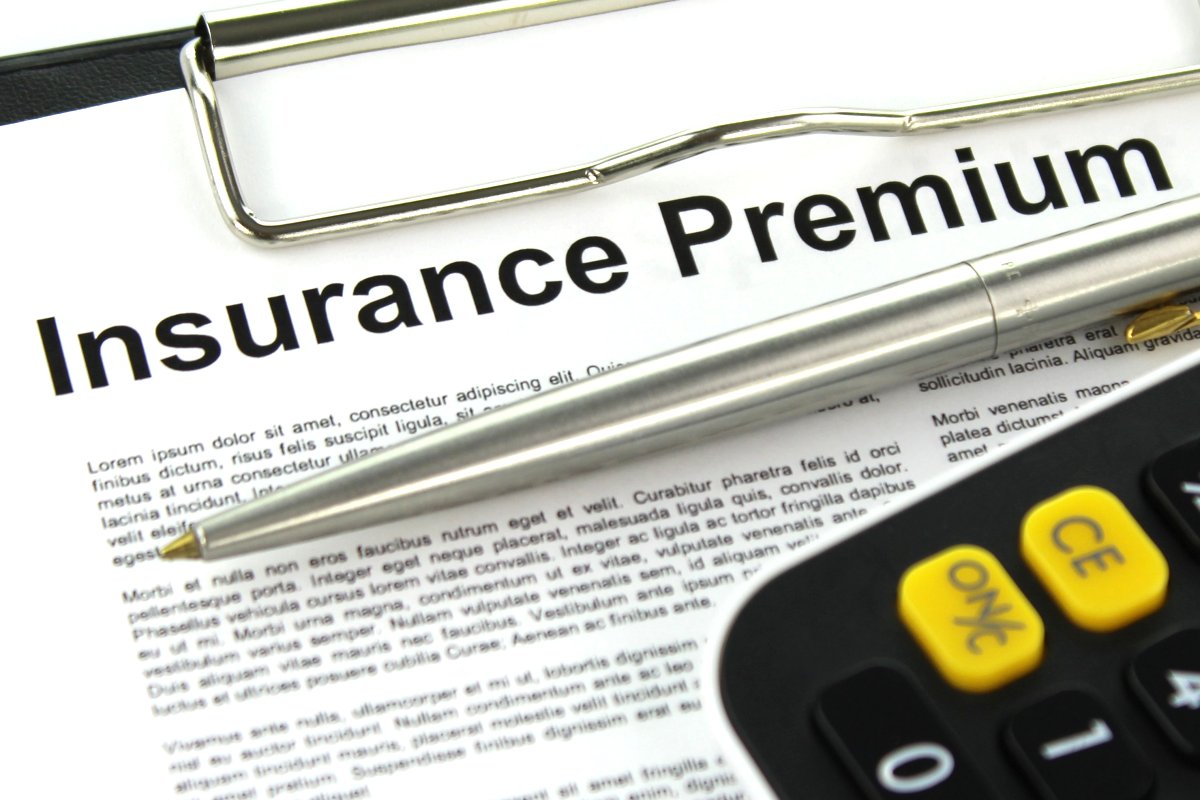
12. **Unexpected Insurance Premium Hikes: The Cost of a Modified Ride**
Beyond the purchase price, loan interest, and potential warranty woes, customizing a new car introduces another often-overlooked financial burden: significantly higher insurance premiums. While you might be focused on the aesthetics or performance gains, your insurance provider views your modified vehicle through the lens of increased risk and replacement value. As stated in the characteristics, ‘Insurance Impact: Premiums may increase due to higher risk or value of modifications,’ and this can be a substantial ongoing expense that chips away at your budget.
The reasons behind these premium hikes are multifaceted. Firstly, highly customized vehicles are often perceived as higher risk targets for theft, due to their unique parts and increased desirability. Secondly, the modifications themselves can increase the vehicle’s replacement value; if your custom wheels, performance engine, or bespoke body kit need to be replaced after an accident, the cost for the insurer goes up dramatically compared to a stock vehicle. Finally, certain performance modifications can lead to a perception of higher-risk driving behavior, which insurers naturally factor into their calculations.
A critical financial misstep is failing to inform your insurance provider about your modifications. While it might seem like a way to save money, it can lead to catastrophic financial consequences. If you’re involved in an accident or your car is stolen, and your insurer discovers undeclared modifications, they can deny your claim entirely. This means you would be solely responsible for the cost of repairs, replacement, or any liabilities incurred, a devastating financial blow. Transparency with your insurer is not just a recommendation; it’s a financial imperative to ensure your coverage is valid.
Specific types of modifications are particularly prone to triggering higher insurance rates. Performance upgrades like turbochargers or brake kits, extensive aesthetic changes such as custom paint or body kits, and even enhanced audio or navigation systems can all contribute to increased premiums. These additions not only raise the vehicle’s value but also often require specialized, more expensive repair work if damaged. Some insurers might even refuse to cover certain extreme modifications, leaving those parts uninsured or requiring a specialized, more costly policy.
Before undertaking any customization, it is absolutely essential to contact your insurance provider to understand how your planned modifications will affect your policy and premiums. Get quotes for various levels of coverage for your modified vehicle so you can accurately factor these ongoing costs into your budget. Neglecting to account for these potential increases can result in an unexpected and significant drain on your finances, making the dream of a custom car far more expensive than initially imagined. Informed financial planning includes understanding and budgeting for these increased insurance expenses.

13. **The Underestimated Time Investment: Beyond Dollars and Cents**
While the financial costs of customizing a car are often discussed, a deeply underestimated factor is the sheer amount of time investment required. Customization isn’t just about spending money; it’s also about investing countless hours—hours that have their own opportunity cost. As the context lists under characteristics, ‘Time Investment: Requires significant time for research, installation, and upkeep.’ For many, this commitment of time can be as burdensome as the financial outlay, impacting personal life and other pursuits.
The journey of customization begins long before any wrench turns, starting with an extensive research phase. You’ll need to dedicate considerable time to identifying the right parts, researching their compatibility with your specific vehicle, finding reputable suppliers, and locating skilled professional installers. This also includes researching legal compliance for your desired modifications and understanding their potential impact on your warranty and insurance. This initial legwork alone can consume dozens of hours, especially if you’re delving into complex or specialized modifications.
Once parts are acquired, the installation phase demands its own substantial time commitment. If you’re relying on professional shops, you’ll spend time coordinating appointments, dropping off and picking up your vehicle, and potentially dealing with unexpected delays or issues that arise during the installation process. Even if you’re a DIY enthusiast, the actual hands-on work—learning new skills, troubleshooting unforeseen challenges, and carefully installing components—can stretch into weekends, evenings, and even weeks, pulling you away from other activities or responsibilities.
The time investment doesn’t end once the modifications are installed; ongoing upkeep and maintenance are often more intensive for customized vehicles. Custom parts may require specialized cleaning, more frequent adjustments, or specific maintenance schedules. Performance modifications, for instance, might necessitate more frequent checks or specific tuning. Troubleshooting any issues that arise from aftermarket parts can be a time-consuming endeavor, potentially involving multiple trips to different specialists. This constant vigilance adds another layer of time commitment to car ownership.
Ultimately, every hour spent on customizing, researching, installing, or maintaining your modified car is an hour not spent on other valuable activities, whether it’s working, spending time with family, pursuing hobbies, or simply relaxing. This ‘opportunity cost’ of time can be significant. While the personal satisfaction and involvement in the car enthusiast community are legitimate benefits, it’s crucial to acknowledge the extensive time commitment involved. Before diving into customization, honestly assess whether you have the time and dedication for this ongoing project, ensuring that your passion doesn’t become an overwhelming obligation that detracts from other important aspects of your life.
In the exhilarating world of automotive customization, the roar of a modified engine, the gleaming paintwork, and the unique silhouette of a personalized ride can be incredibly seductive. However, as we’ve explored, the path to a truly customized car is paved with numerous financial landmines, from the immediate sting of depreciation and high loan costs to the often-hidden expenses of modifications themselves. Financial experts like David Bach and Suze Orman consistently remind us that a car is a depreciating asset, not an investment, and this fundamental truth should guide every decision, especially when considering customizations.
From the poor resale value of highly personal aesthetic changes to the increased long-term maintenance, the risk of voided warranties, unexpected insurance premium hikes, and the significant, often-underestimated time commitment, each modification carries its own set of financial repercussions. While personal satisfaction and passion for cars are invaluable, true financial security comes from making informed, pragmatic choices that prioritize your wealth-building goals over fleeting desires for showroom shine and personalized flair. By understanding and meticulously evaluating these potential financial missteps, you empower yourself to navigate the automotive world with confidence, ensuring your vehicle truly serves your life without derailing your financial future.



